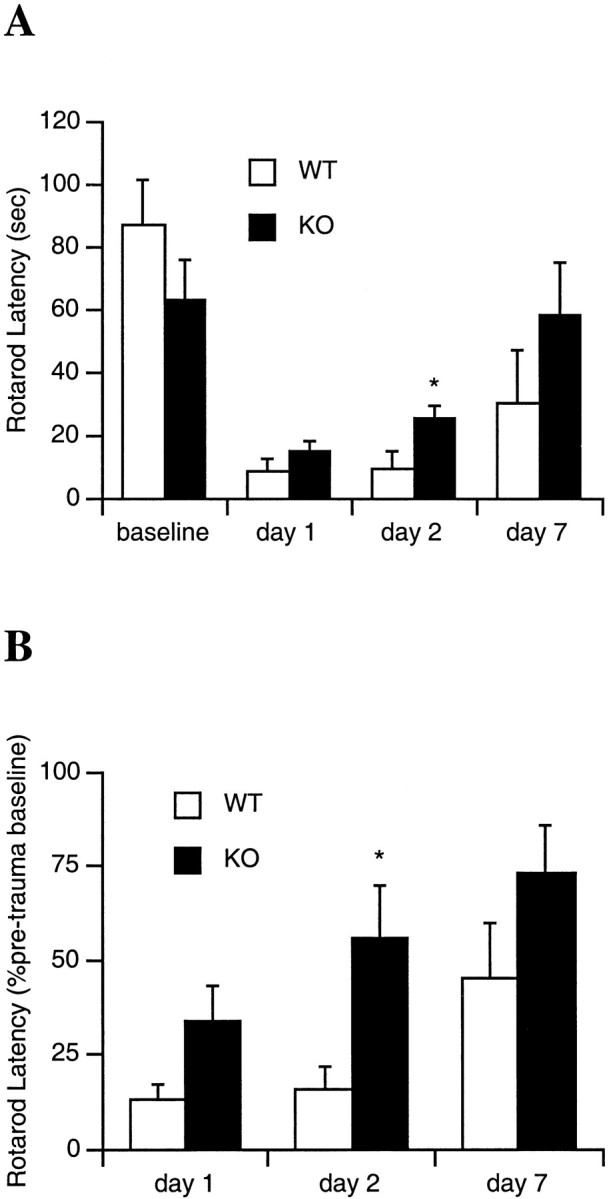Fig. 3.

Motor performance (mean ± SEM) on a rotarod device after brain trauma expressed either as the absolute time in seconds (A) or a percent of pretrauma latency (B) on the rotating rod. After brain injury, latencies were significantly reduced in all mice. A repeated measures ANOVA showed that overall rotarod performance was significantly improved in knock-outs (KO) versus wild-type littermates (WT). However, single time point comparisons showed significantly improved performance in the MMP-9 knock-out mice versus wild-type littermates only at 2 d after trauma (*p < 0.05). Although the average rotarod latency was also improved in knock-outs at 1 and 7 d, the difference did not reach statistical significance (p = 0.09 at day 1, p = 0.18 at day 7 for percentage comparisons). This may be caused by the somewhat variable rotarod response after trauma and the need for larger numbers of mice to increase the statistical power (n = 10–13 per time point).
